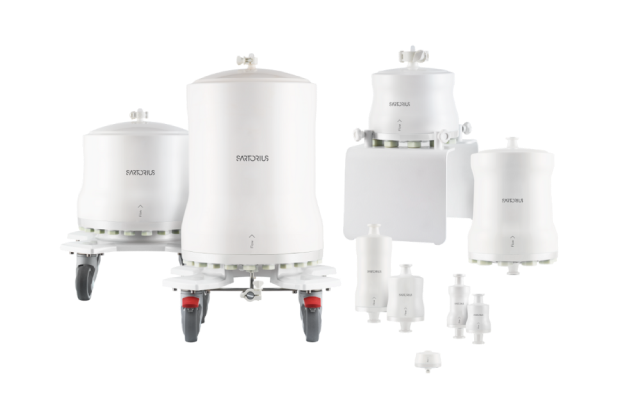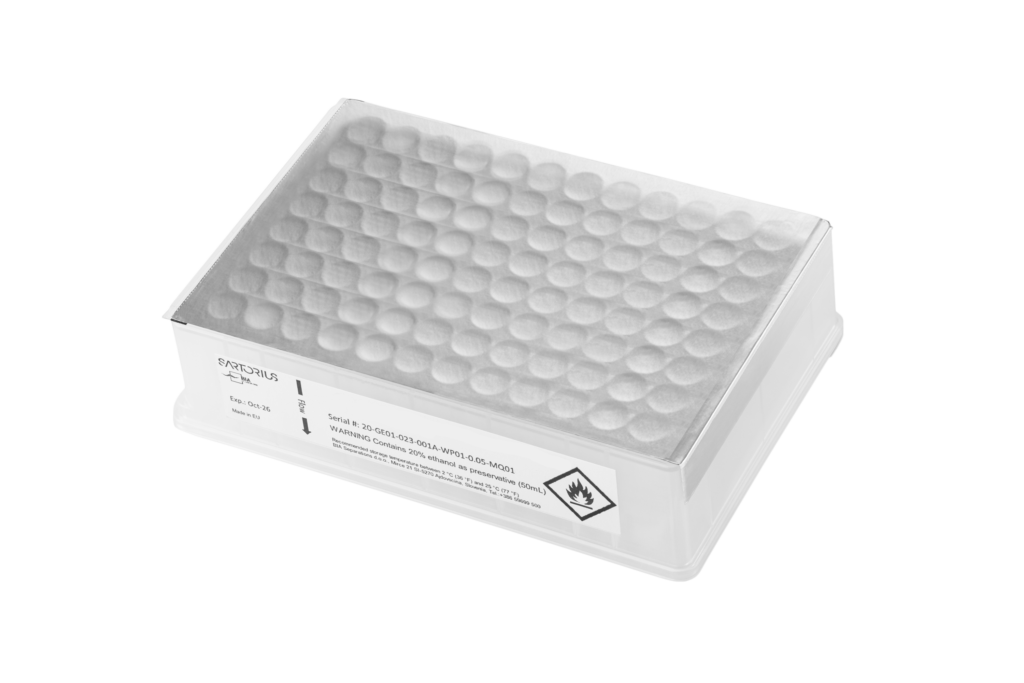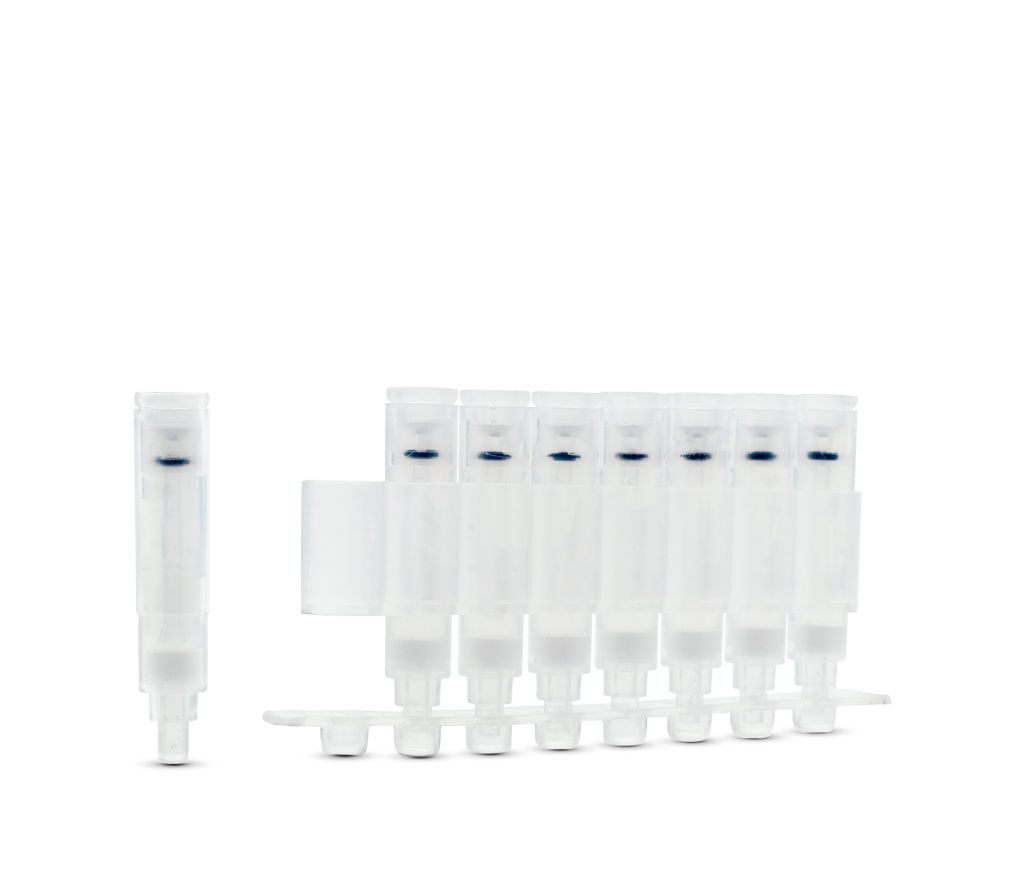One of the main challenges in adeno-associated virus (AAV) viral vector production is effective and consistent separation of full AAV particles. A key step in the downstream process (DSP) is polishing using anion exchange chromatography (AEX), which depends on subtle differences in capsid charge. Even minor charge variations in the sample composition can impact the process’s reproducibility. The introduction of citric acid into the process is a common variable that can compromise reproducibility. Let’s explore the reasons behind this.
Why Buffer Compatibility is Crucial
Maintaining buffer compatibility through the whole process is crucial for robustness of DSP.
The capture step in AAV gene therapy can be performed using methods such as affinity or cation exchange chromatography (e.g. CIMmultus® SO3). For the polishing step, quaternary amine-based anion exchangers like CIMmultus® QA HR are widely used.
Residual citric acid from the AAV capture step plays a significant role in non-reproducibility of the AEX polishing step. Before the polishing step, it is recommended to perform a buffer exchange or change the affinity eluate buffer (e.g. from citrate to a monovalent buffer, such as glycine or acetic acid).
Residual Citric Acid and Its Impact on AEX Performance
- Competing for Binding Sites
Citric ions are negatively charged and bind to AEX columns, competing with our negatively charged sample for the binding sites. As a result:
- The first elution peak, typically associated with empty AAV particles, is reduced or missing. This impurity subpopulation of empty AAV capsids may elute closer to or within the full AAV capsid peak, thereby reducing the purity of the target full AAV capsids.
- The presence of citric acid weakens the binding efficiency between AAV and the AEX ligand. As a result, binding under less favorable conditions for AAV loading is required, such as lower conductivities or higher pH levels. Extremely low conductivity may lead to aggregate formation, while excessively high pH levels could damage full AAV capsids.
- Magnesium Ions Chelation
Magnesium chloride (MgCl2) is a common additive in the AAV purification process, as it stabilizes empty capsids and affects separation between empty and full AAV capsids. However, with the formation of a magnesium-citrate chelate, magnesium ions might no longer affect the separation.
- Impact of Citric Ion Quantity on Chromatographic Profile
Changes in the chromatographic profile become evident even at low concentrations of citric ions present in the loading sample. At higher concentrations of citric ions, a decrease in the peak heights and peak areas of AAV elution peaks, along with lower sample recovery, is observed:

- The Role of Fractionation
Fractionation approach of affinity elution plays an important role in the amount of citric acid present during the polishing step. Affinity elution is generally achieved with a step gradient. The length of peak fractionation depends on the amount of sample loaded onto the column. If sample fractionation varies with each run, each sample processed on AEX will behave differently due to the varying amounts of citric ions collected during the capture step elution.
How to Mitigate Citric Acid Issues
To maintain reproducibility in AEX polishing, it is essential to have full control over the amount of citric acid in the polishing step. For achieving full control, consider one of the following approaches:
- Optimize Fractionation: Standardize peak fractionation during affinity elution to minimize variability in citric ion carryover.
- Avoid Citrate Introduction: Use buffers that do not compete for binding sites on AEX columns to ensure that no residues of citric acid or other negatively charged buffers (e.g. acetic acid or glycine) remain from the AAV capture step.
- Buffer Exchange: Replace citric acid in the affinity eluate with alternatives (e.g. formic acid). It has been observed that certain monovalent buffers (e.g. acetic acid and glycine) have similar, but less significant, effect on the consistency of the AAV AEX polishing step. However, we haven’t observed this effect with a zwitterionic buffer like glycine.
- Full Control Over Amount of Citric Acid: A low amount of citric acid in the AAV polishing step may lead to improved resolution between empty and full AAV elution peaks and potentially prevent aggregation at low salt conditions. Achieving full control requires adding a defined low amount of citric acid to the polishing load by means of buffer exchange.
Although citric acid may seem unimportant it can actually have a significant impact on the consistency of AAV polishing with AEX columns. By understanding the effects of citric ions – such as binding competition and magnesium chelation – you can take preventive steps to optimize your downstream process. Small adjustments, like switching to alternative eluates, improving fractionation consistency at the AAV capture purification step, or having full control over the amount of citric acid in the polishing step, can lead to more predictable results, higher purity, and higher sample recovery.
Addressing these challenges should ensure smoother workflows and more reliable AAV separations.



